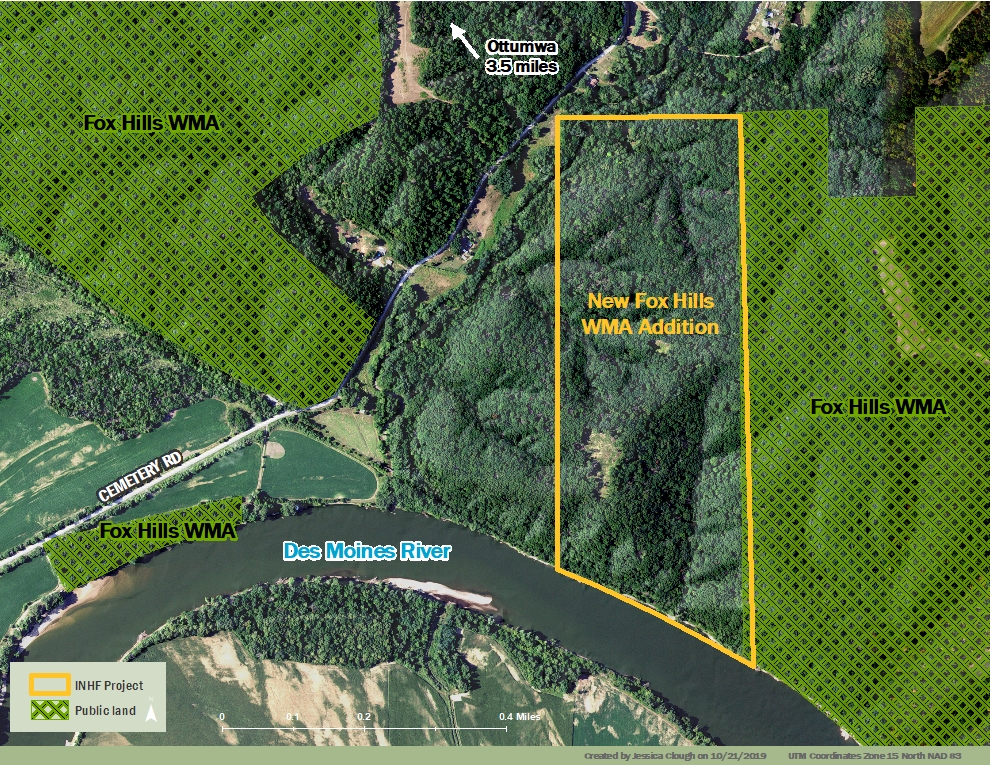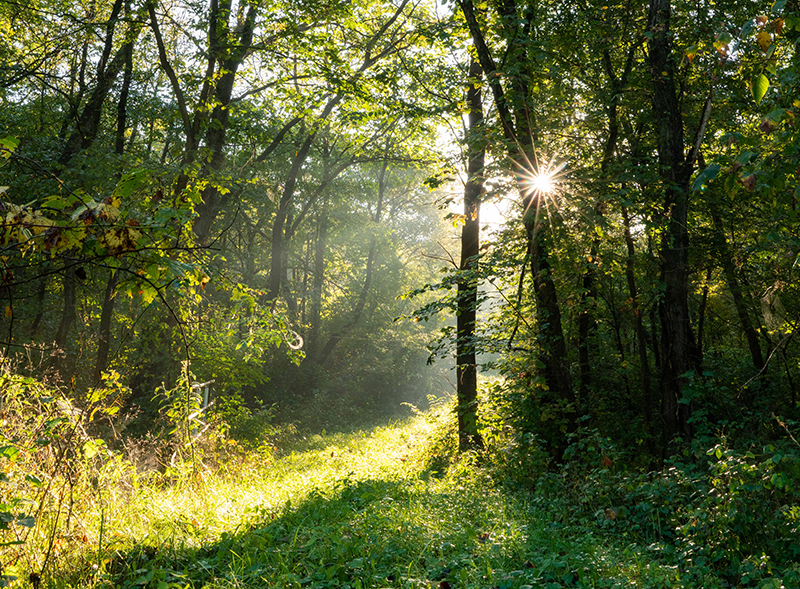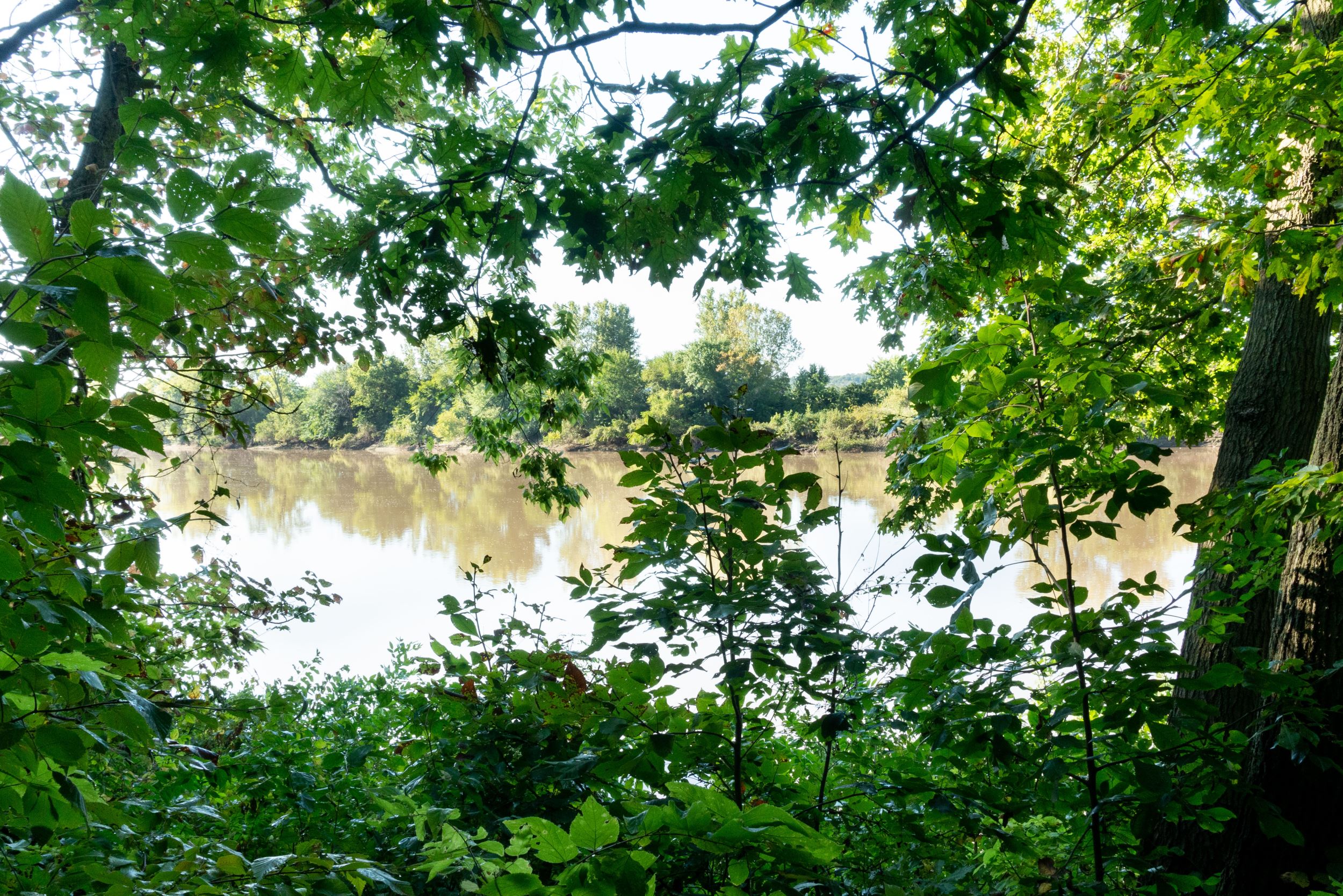Wild Woodland
By Rowan McMullen Cheng on October 31, 2019 in Blog

Between the orange oak and golden yellow hickory leaves, the canopy of the most recent addition to Fox Hills Wildlife Management Area (WMA) near Ottumwa in Wapello County is ablaze in autumn.
Encompassing 116 acres of upland woodland habitat along the Des Moines River, the woodland offers high quality wildlife habitat, stunning views of the river valley below and expanded opportunities to experience a sense of wildness just three miles southeast of the county seat.
“We have a limited ability to protect more acres in this area so when something as beautiful as this opens up, it’s very exciting,” said Jeff Glaw, an Iowa DNR wildlife management biologist.
The addition, which was purchased by Iowa Natural Heritage Foundation (INHF) in 2018, transferred to the Iowa DNR in 2019 and is now open to the public, is part of a complex of protected land along the river that includes over 3,000 acres.

Woodland wonder
The addition’s mature woodland draws an impressive assortment of woodpeckers. Visitors are greeted by the iconic tip-tapping of Redheaded, Pileated and Downy woodpeckers. Preferring the mature stands of White oak and Shagbark hickory, this property also draws in Red-bellied and Hairy woodpeckers.
“We’re looking to keep the mature trees, especially the oak and hickory that have been there for a long time, and weed out the non-native species, like black locust,” said Glaw. “One of the issues we have with quality forests is fragmentation, so we fill in the areas that are too open by planting more trees.”
Offering dark skies, plenty of insects, living and dead trees, the addition also provides excellent habitat for bats. On a clear night, recreationalists will likely see common Iowa bats like the Little brown bat and the Big brown bat, as well as the federally endangered Indiana bat and the federally threatened Northern long-eared bat.
“The maternal bat colonies really like the river corridor area and the creeks that feed into the Des Moines River,” said Glaw. “We do everything we can to protect them, like increasing public awareness and education and making sure our forestry management plan maintains the trees and areas they like.”
The addition is also within the Soap Creek Bird Conservation Area (BCA), drawing in bird watchers, and as with many quality upland woodlands in Iowa, wildlife abound in the secluded hunting area.

River renewal
Walking through the property, a southern-facing upland bluff opens the woodland understory to showcase panoramic views of the Des Moines River valley. Even as the days grow shorter and the leaves fall, suspended in the autumn wind as they float down the bluff to the cool river below, the river is still full of life. Forever flowing, the southern part of the Des Moines River rarely completely freezes over.
Year-round access to food and fresh water make this area a prime residence for large waterfowl. Thousands of geese flock to the chilly river each year. Bald eagles reside along the tree-lined bluff.
A scenic perch overlooks the sandy shores of the Des Moines River as water rushes below, birds chirp above and leaves rustle all around. The natural soundscape provides a symphonic escape from typical city noises.
“It’s probably as close as you can get to being in a real wilderness. You don’t hear cars or trains,” said Glaw. “You can listen to nature and see it at its finest. It’s a nice area if you want to get away and clear your head.”